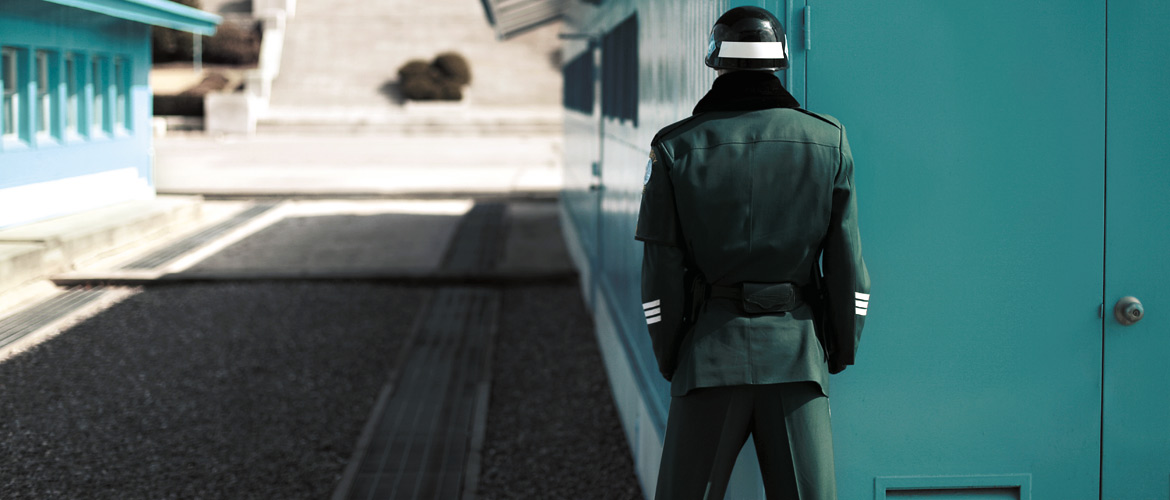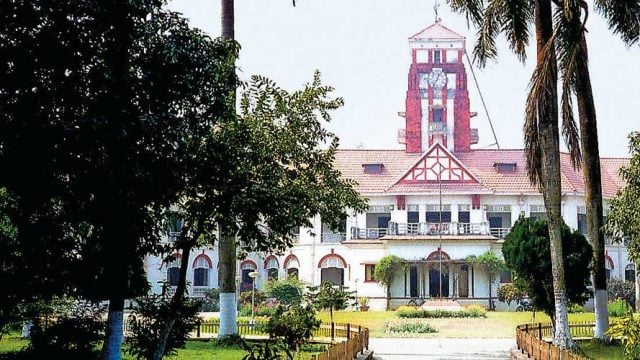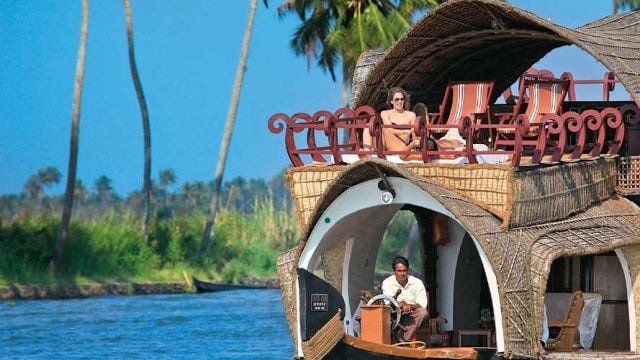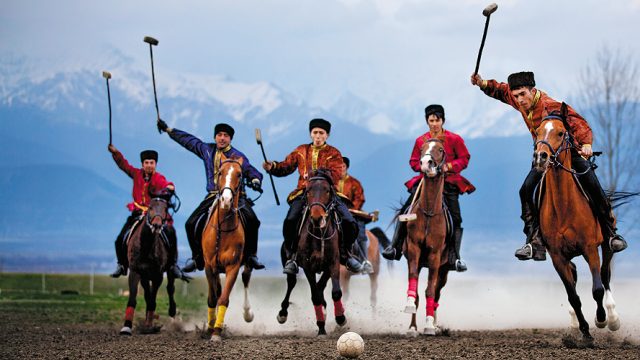The climate-controlled interiors offered a welcome refuge from the crisp, early-morning breeze, as the bus paced along
Before long, the appearance of barbed wires, traffic barriers and uniformed personnel indicated that we had arrived at our destination. The Demilitarized Zone (DMZ) is a 250km-long, 4km-wide area spread between South and North Korea, created as part of the Korean Armistice Agreement of 1953. Despite the significant presence of military personnel, the implicit understanding is that the DMZ is a buffer zone where both sides would refrain from any sort of combat.

We may have been part of an innocuous tour group, but this was a high security area and identity checks were mandatory for everyone. Passports open to the photo page, we held them up for inspection as American soldiers came around perusing the range of national identity documents on display—Korean, Australian, Swedish, Indian and then some more. Security checks done, it was on to the visitor centre of the first stop—the JSA or the Joint Security Area.
Following a quick presentation to familiarise us with the history of South-North relations, we were asked to sign an affidavit taking responsibility for any harm that might occur to us ‘as a result of enemy action’. Any notions of this being yet another hop-on hop-off sightseeing tour thus quickly dispelled, we were bundled on to a military bus for a ride along the JSA. Gone was our good-humoured Korean guide SP and in his place stood a no-nonsense private, fatigues, guns and all.

The drive took us through grim, unpaved lanes, taking in observation posts and other focal points—some of them bloody reminders of instances when the seeming calm of the JSA was violated. The highlight of this sortie, however, was the conference area and for good reason too. This is where the two Koreas came face-to-face, according us our very first view of the North. The conference rooms were built to facilitate discussion between the two sides in ‘neutral’ territory. The international border traverses through the middle of these rooms and during the course of a wander inside, technically, one does cross over to North Korea!
Cheap thrills aside, there was nothing remotely light-hearted about the JSA. About 100m across from the conference rooms was the North Korean visitor centre, where stern soldiers stood guard, mindful of tourist eyes from across the border. Their straightjacketed body language was in stark contrast to their South Korean counterparts who held their Taekwondo combat position with practiced ease, dark glasses masking any signs of softness or emotion.

The armistice notwithstanding, the North Korean military have been guilty of multiple clandestine intrusions into the south, of which the most intriguing, undoubtedly, are the infiltration tunnels. These underground tunnels into the south were dug during varying points in time. Four of them have been discovered until now and it was to the third that we were now headed. For a generation raised on spy movies and political thrillers, the intrigue of a secret passageway is understandable and it is therefore no surprise that the third infiltration tunnel is South Korea’s top tourist attraction.
Nowhere was the capitalism versus communism dichotomy more apparent than at the 3rd tunnel. Our guide, SP, cheekily pointed out that while communism entails using manual labour and dated equipment to dig secret tunnels, capitalism milks the output of that labour by turning it into a tourist attraction.

Repeated defiance of the armistice in the form of spy infiltrations is one thing but a giant snub in the form of a 1.7-km underground tunnel is quite another. We bent low to make our way through its dank interiors. The scraggly walls were pockmarked with inch-wide holes—erstwhile placeholders for dynamite that were used to blast through the rock. Legend has it that cannons above ground were fired at exactly the same time as the dynamites in a canny bid to muffle the noise from the subterranean shenanigans. The 3rd tunnel was ‘discovered’ by the South with the help of a defector. On being caught, North Korea defended the tunnel claiming it to be a conduit for transporting coal—an assertion neither side took seriously.
Despite intermittent acts of aggression from across the border, the general all-around vibe in the south is one of misplaced unity. The JSA is dotted with flags that spell hopes for unification—a sentiment echoed by SP and some other locals we met along the way. What the North’s take is, we wouldn’t know. At the best of times, it is not a society known to indulge in needless emotion. But, to be fair, our understanding of North Korea is largely speculative reconstructions based on hearsay and dubious media clips that surface from time to time.
Until this point in the tour, our only glimpse into the furtive north was the visitor centre across from the conference rooms at the JSA. There was thus much anticipation around the next halt—a viewing platform perched on a vantage position atop a hill. Organised voyeurism couldn’t get better than this. Peppered along the edge of the viewing platform were a dozen or so binoculars pointing north of the border—entire factories, villages and homes to be watched, observed and mulled over for the drop of 500 Korean won into a binocular’s coin slot.

It was nothing short of surreal—to have a peek into one of the most inaccessible countries in the world. The cookie-cutter homes in the village looked modern and built to plan, much like anywhere in the developed world. ‘Propaganda village’ is how the South Koreans preferred to call them, as they merely existed to showcase the supposed fabulous life of North Koreans to the rest of the world. These ghostly homes had never been occupied. Apparently, the utopic picture was set to the tune of ‘this is paradise’ ditties—often blared out through loudspeakers placed along the border for the attention of their capitalist brethren! The most striking structure, however, was a gigantic North Korean flag hoisted on a 160m flagpole—60m taller than the one on the South Korean side. The canvas was different but the narrative same—‘whatever you do, we can do better’.
Transportation has historically had a vital role to play in reinstating diplomatic relations between nations, having repeatedly proven its effectiveness as a logistical icebreaker of sorts. It was perhaps with this intent that attempts were made to revive the once active Gyeongui rail line that ran between North and South Korea. The upgradation work was undertaken with great gusto and all was on track until North Korea unceremoniously pulled out in 2008, citing differences with the South’s governmental policies.
Dorasan station, our last halt for the day, was to be one of the key stops on the route. At the entrance to the deserted northbound platform, the ‘To Pyongyang’ sign flashed bright, symbolising the North’s failure to keep their part of the deal while paradoxically holding up a placard for a unified future. Dorasan station’s only passengers these days are tourists who avail of the four daily services to Seoul. Its shiny interiors aside, the station stood like a mausoleum of failed assurances—a physical embodiment of the harsh truth that even the most well intentioned buttresses of the present could crack under the weight of a history of mistrust.

As we started to make our way back to Seoul, SP resumed regaling us with historical anecdotes—riveting tales of treachery, one-upmanship and kidnapping. But it is the personal stories of separated families, reunions and cross-border camaraderie that actually brought to life what the DMZ exemplified and with it the understanding that these stories are not just the prerogative of the South. For all its military gravitas, the DMZ, perhaps, is where the emotional reality of a fractured nation is most palpable.
At the final exit point, a South Korean soldier hopped on board for a quick headcount to rule out possible defections. Unification might be the ultimate goal, but until then not just land and resources, even tourists were not to be conceded to the folks across the border.
The Information
Getting There
Asiana Airlines operates direct flights from Delhi to Seoul (Incheon International Airport). Other airlines operating out of Delhi are Air China, China Eastern, China Southern, Japan Airlines and Korean Air. From the airport, one can reach the city by bus, rail or taxi. There are flights to Seoul from Mumbai too.
Visa and Helpline
To get the visa for South Korea, you need to go through vfsglobal.com/korea/india/. There is a 1330 Korea Travel Hotline which helps domestic and international tourists. It also provides information and services for most regions of Korea as well as interpretation services.
Where to Stay
If you check english.visitkorea.or.kr, you will find different certifications
for accommodations such as Goodstay, Benikea and Korea Stay. You can make your choice as per your budget.
Seoul: Lotte Hotel Seoul, Jung-gu, lottehotel.com/seoul (around KRW 200,000 per night in March); Ibis Ambassador Myeongdong, Jung-gu, ibis.com/gb/hotel-6317-ibis-ambassador-seoul-myeongdong (from KRW 104500); Hotel Sun Bee, Jongno-gu, hotelsunbee.com (KRW 140,000-160,000 per night for a standard double room).
Gangwon-do: Yongpyong Resort Dragon Valley Hotel, Pyeongchang-gun, Gangwon-do, yongpyong.co.kr (from around $88 per night in March).
What to See & Do
Established on July 27, 1953, the Demilitarized Zone (DMZ) is a buffer zone. The DMZ extends largely from Gyeonggi-do to Gangwon-do. You are required to show legitimate form(s) of identification and/or your passport when going to the DMZ. Photography is restricted in many areas. See english.visitkorea.or.kr.
Gyeonggi-do: For some attractions, you have to register in advance. Application process is at Imjingak Tourist Information Center for those touring by bus, while travellers on the DMZ Train can do it at the Imjingang Station. There is also a fee. One can visit Nuri Peace Park, the 3rd Tunnel, Dorasan Station. Panmunjom is the Joint Security Area and a tour here requires permission. There is also Unification Hill (Odusan Unification Observatory), and Yeolsoe Observation Deck. Visitors to the 3rd Tunnel and Dorasan Station must show their identity cards at the Imjingak ticket centre and buy a ticket. Only group tours are led to Panmunjom, arranged by official authorities and/or travel agencies. Certain nationals are not allowed to enter the DMZ and children over the age of 10 are allowed to visit.
International
Korean Demilitarized Zone
Korean War





